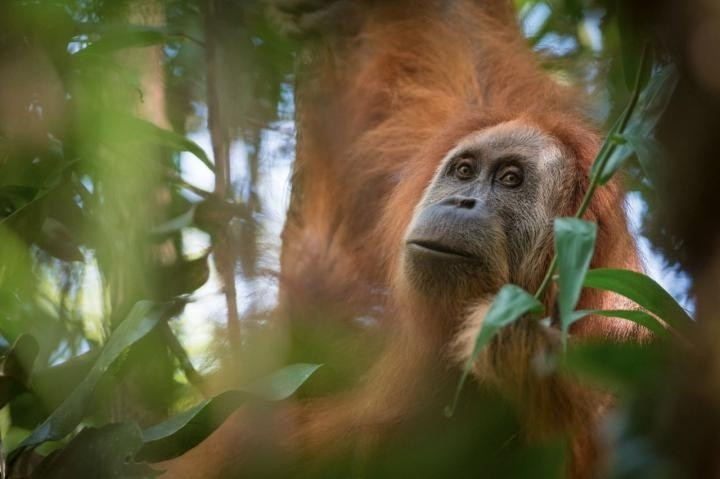A new great ape species has been discovered - and it's in danger of extinction
The finding takes the total number of great ape species up to seven – a group which also includes humans.
An isolated population of orangutans living on the Indonesian island of Sumatra has been identified as a new species by scientists.
The finding takes the total number of great ape species up to seven – a group which also includes humans, eastern and western gorillas, chimpanzees, bonobos, as well as Sumatran and Bornean orangutans.
A study published in the journal Current Biology describes the new species - which has been named Tapanuli orangutan (Pongo tapanuliensis). It is distinct from the Sumatran orangutan which it shares the island with.
Unfortunately, there are only about 800 Tapanuli orangutans left, according to the researchers, placing them among the most threatened great ape species in the world.
"It isn't an everyday event that we find a new species of great ape, so indeed the discovery is very exciting," said Michael Krutzen, senior author of the study from the University of Zurich in Switzerland.

"Great apes are among the best-studied species in the world," added Erik Meijaard of the Australian National University (ANU). "If after 200 years of serious biological research we can still find new species in this group, what does it tell us about all the other stuff that we are overlooking: hidden species, unknown ecological relationships, critical thresholds we shouldn't cross? Humans are conducting a vast global experiment, but we have near-zero understanding of what impacts this really has, and how it could ultimately undermine our own survival."
The Tapanuli orangutans were first discovered by researchers from (ANU) in 1997 in Batang Toru - a region of northern Sumatra which lies to the south of the known range for Sumatran orangutans.

Initially though, there was not enough evidence to support the designation of a new species despite the fact that the Tapanuli apes differed from other orangutans in their behaviour and at the genetic level.
But in 2013, researchers were provided with the first real indications that the Batang Toru orangutans were unique. They were able to study the skeleton of a Tapanuli orangutan which had been killed by humans, finding significant differences in its skull and teeth when compared to Sumatran orangutans.
Now, analysis of 37 orangutan genomes conducted by scientists from the University of Zurich (UZH) – the largest gene study of wild orangutans to date - provided the evidence needed to describe the orangutans as a new species.
"When we realized that the Tapanuli orangutans were morphologically different from all other orangutans, the pieces of the puzzle fell into place," said Michael Krützen, Professor of Evolutionary Anthropology and Genomics at UZH.
Maja Mattle-Greminger, a postdoctoral researcher at UZH, added: "We identified three very old evolutionary lineages among all orangutans, despite only having two species currently described."

The analysis showed that the deepest split in the evolutionary history of living orangutans occurred more than three million years ago between the Batang Toru population and Bornean orangutans in the north of Sumatra.
Bornean and Sumatran orangutans on the other hand, only diverged much later - less than 700,000 years ago.
"The Batang Toru orangutans appear to be direct descendants of the initial orangutans that had migrated from mainland Asia, and thus constitute the oldest evolutionary line within the genus Pongo," said Alexander Nater, also from UZH. "The Batang Toru population was connected to populations to the north until 10,000 or 20,000 years ago, after which it became isolated."
The Tapanuli are severely threatened by hunting and a proposed hydroelectric dam which would flood large parts of their habitat if constructed.
"If even 8 out of 800 animals per annum were killed or otherwise removed from the population, the species might be doomed," the scientists warn.
In addition, in light of the new discovery, there are now 800 fewer Sumatran orangutans, likely taking their total numbers to below 7,000.
The researchers stress the importance of boosting conservation efforts to protect orangutans in the region.





















